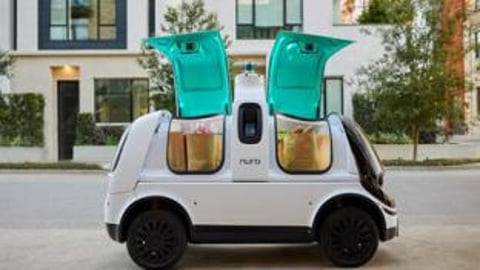Can Innovation Bring Food Retail Closer to Consumers?
As food retailing continues to change during the pandemic, one of the latest ideas for innovation involves bringing the grocery store to consumers – via 53-foot trailer or smaller trucks.
That’s the idea behind Toronto-based Grocery Neighbour, a fledgling mobile grocery store operation that aims to have 1,000 vehicles in operation over the next five years, according to founder Frank Sinopoli. As he told it, the service would function roughly similar to a bus route — neighborhoods interested in the operation would get regularly scheduled service at designated points.
This isn't an on-demand delivery service, Sinapoli clarified, but a true mobile grocery story concept, with interest reflected by consumers “voting” for the service via the Grocery Neighbour site. As the trailer or small truck approaches a certain service area, consumers would “digitally line up” so they can shop efficiently in the vehicle, with self-checkout payments powered by object recognition and mobile technology, he explained.
“When they are done shopping, they can just leave,” Sinopoli said.
Of course, even a large trailer is much smaller than a typical grocery store, and would carry significantly fewer SKUs. But the product selection will be designed to appeal to a broad selection of consumers once the service launches, likely in the first quarter of 2021 in the Canadian province of Ontario. “Our focus is on fresh produce, meat, cheese, local product and CPG staples,” Sinopoli said.
He positions the service as appealing to consumers who’d rather not make a trip to traditional grocery stores and navigate their often crowded parking lots — although he acknowledges that consumers might have to drive to the Grocery Neighbour trailer or trucks, as — like buses — they have specific spots. (Smaller trucks would be used instead of trailers in more crowded areas, he said when discussing the potential future of the service.)
So why not just go to the store, then?
“Well, there are lines and no social distancing,” Sinopoli pointed out, adding that the relative lack of overhead for his concept will serve to keep down prices and avoid charging a premium to consumers.
Even so, the service presents obvious challenges.
Not all neighborhoods or local governments are likely to be open to the idea of a 53-foot-long trailer taking up street space. Also, the service can handle up to perhaps 2,000 SKUs, he said — enough for some shoppers but too little for others, especially those seeking to reload their pantries or stock enough for a month or more. (The service potentially could be used to serve consumers in so-called food deserts.)
Restocking the Grocery Neighbour vehicles will also require some skill.
“Right now, we are working with wholesaler suppliers,” Sinopoli said, but he hopes to change that. “We are working toward a mobile fulfillment system where we will control and own that system.”
The pandemic has supercharged the growth of e-commerce in the food retail space, and grocers are quickly adopting new modes of fulfillment and other tools to keep up with demand. With the launch of Grocery Neighbour looming, more information will eventually emerge about whether this service will find a solid niche in the food retailing world.





